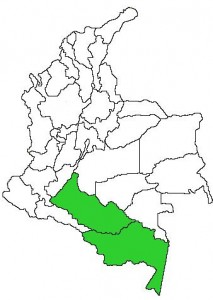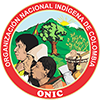Andoque

OTHER NAMES:
Andoque "the people of the ax" - andoque, cha'oie, businka
GEOGRAPHICAL LOCATION:
They are located in the Araracuara region, Aduche canyon, very close to the banks of the Caquetá river, south of the Colombian Amazon. There are some settlements in the Peruvian region of the Ampi- Yacu River.
LANGUAGE:
Andoque is an American Indian language spoken by a few hundred Andoque Indians in the course of the Caquetá River in Colombia, and currently in decline in terms of number of speakers.
In 2000 it was reported that there were 610 speakers in the Anduche River area, downstream from Araracuara (Amazonas, Colombia); 50 of them were monolingual in that language. Previously, the language had also been spoken throughout Peru. 80% of speakers speak Spanish fluently.
POPULATION:
The population was quickly decimated by the effects of rubber exploitation that occurred in past decades. Of the almost 10 thousand habitants that existed, now only 597 people are registered.
CULTURE:
They traditionally occupied a wide territory that extended from the Monochoa gorge, above the Araracuara stream to the Quinche gorge, both tributaries of the Caquetá river. They were divided into relatively autonomous lineages that comprised more than 10,000 people; each lineage lived in a maloka, epicenter of the social, spatial and ceremonial life of the group.
Ethnohistorical evidence, speak of extensive networks of exchange between groups in the region that inhabited different environments. The Andoque provided stone axes, excavated in their territory within the framework of complex rituals that placed this activity in an important place within their worldview and ethnic identity. The shortage of stone in the area as well as access to these tools gave the group a privileged position for the exchange.
Although the expeditions of conquest and colony of the territory in the seventeenth century by Spaniards, Portuguese and Franciscans produced great changes in the Amazonian territory, the cycle of "the rubber industry" at the beginning of the twentieth century, was the most significant milestone in its history, generating profound transformations and adaptations in its cultural life. As a result of this activity not only the majority of the population disappeared, but also metal and merchandise instruments were introduced massively, new economic systems were adopted and different models of authority were promoted.
After ethnocide, the forced transfers of the population to the Ampi-Yacu River and the disarticulation of society, the few survivors began a complex process of ethnic reconstruction that is currently still in force. Under this framework, once the time of the Arana house and the Colombian-Peruvian conflict ended, the members of each lineage built new malokas, formed exogamous and patrilocal units with their own name and, as a demographic strategy, they integrated people from other ethnic groups. Its economic activity continued to be the extraction of rubber, incorporating the figure of the employer within its sociopolitical and cosmological organization.
Historically, the Andoque and other groups in the region have been affected by the different processes of colonization, expansion of the agricultural frontier and extraction of natural resources, including cocoa, quina and rubber. Likewise, the recent insertion of the region into the market economy system has shaped the cultural dynamics of the ethnic group and its territory.
ITS CULTURE:
For the majority of towns that inhabit the Amazon region, the use of sacred plants constitutes a fundamental element in their cultural and social life. The Yuruparí is the most transcendental ritual because it recalls the origins and revives the essential elements of its worldview.
They traditionally occupied a large territory that extended from the Monochoa stream, above the Araracuara stream to the Quinche stream, both tributaries of the Caquetá river. They were divided into relatively autonomous lineages that comprised more than 10,000 people; each lineage lived in a maloka, epicenter of the social, spatial and ceremonial life of the group.
Ethnohistorical evidence, speak of extensive networks of exchange between groups in the region that inhabited different environments. The Andoque provided stone axes, excavated in their territory within the framework of complex rituals that placed this activity in an important place within their worldview and ethnic identity. The shortage of stone in the area as well as access to these tools gave the group a privileged position for the exchange.
ECONOMY AND HOUSING:
The andoke base their production system on activities such as agriculture, fishing, hunting and gathering, as well as logging on a smaller scale. The main crops are cassava, sweet cassava, banana and pineapple. In recent years colonization has contributed to Andoque introduce semi-permanent crops such as bananas, cane and corn.
In his shelter there are currently three malokas where people of the highest rank live. Around them, the homes of large families belonging to the respective patrilineal clans are grouped. Gavilán, Venado, Sol, Hormiga Arriera and Cucarrón are the consolidated clans today. Within its worldview, maloka continues to be the confluence space of the social, economic, cultural and ritual structures of the community. In the social sphere, the authority falls on the "maloquero" who is in charge of the direction of the ritual life.
Sources:
-Arango y Sánchez. Los pueblos indígenas de Colombia 1997.
-Dane: Censo1993 -Proyección 2001-.
-De la Hoz, Nelsa. Caracterización de los patrones de cacería en la comunidad de Aduche y el asentamiento de Pto. Santander, Tesis de grado, Departamento de Biología, Universidad Javeriana, Santa Fe de Bogotá,1997.
-Espinoza, Mónica. Convivencia y poder político entre los andoques, EUN, Santa Fe Bogotá,1995.
Recuperado en: TodaColombiaPuebloAndoque
-Aschmann, Richard P. (1993). Proto Witotoan. Publications in linguistics (No. 114). Arlington, TX: SIL & the University of Texas at Arlington.Campbell, Lyle. (1997).
-American Indian languages: The historical linguistics of Native America. New York: Oxford University Press. ISBN 0-19-509427-1.
-Gordon, Raymond G., Jr. (Ed.). (2005). >Ethnologue: Languages of the world (15th ed.). Dallas, TX: SIL International. ISBN 1-55671-159-X. (Online version: http://www.ethnologue.com).
-Greenberg, Joseph H. (1987). Language in the Americas. Stanford: Stanford University Press.
-Kaufman, Terrence. (1994). The native languages of South America. In C. Mosley & R. E. Asher (Eds.), Atlas of the world's languages (pp. 46-76). London: Routledge.



